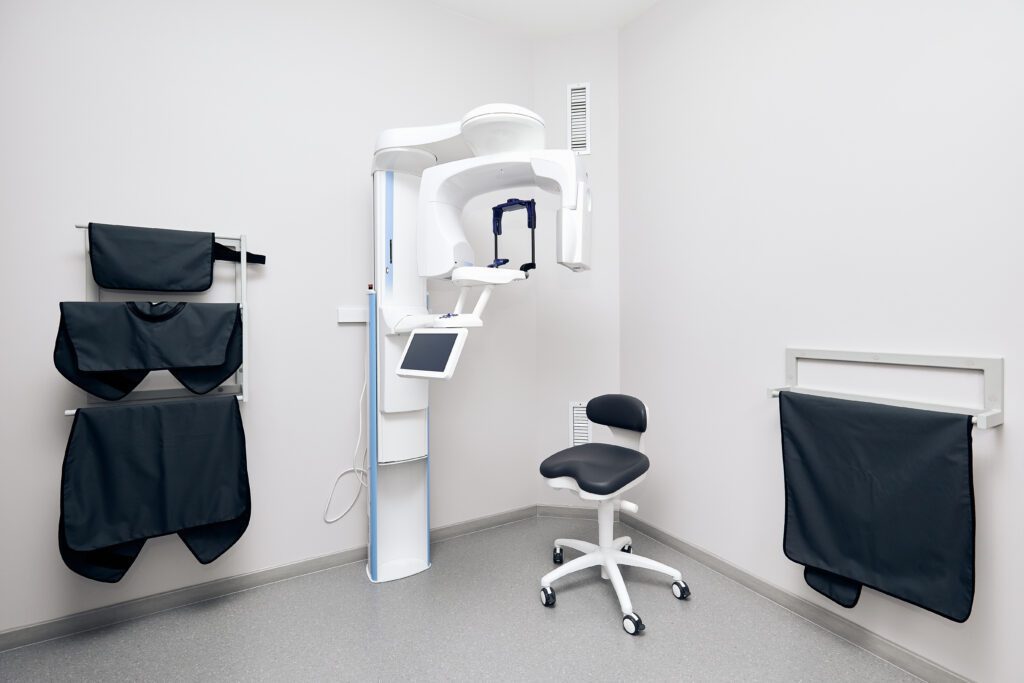Seeing Inside the Bone with a 3D Cone CT Scan

What Is Cone Beam Computed Tomography?
A cone beam CT creates a 3D view and cross sections of the target area. The information it provides is critical for a number of situations, including placing dental implants, performing a complex root canal or extraction, or searching for the source of pain or infection. CBCT gives us the information we need about your condition before a dental procedure.
The Difference Between CBCT and a Hospital CT or CAT Scan
Dental cone beam CT emits less radiation and provides a more complete picture than CT and CAT scans. Hospital CTs work by taking a series of parallel X-ray images of the head, from top to bottom. That leaves gaps between each image, which have to be filled by the computer’s educated guesses, and so many X-rays come with a lot of radiation.
A cone beam CT circles the head, which overlaps each image or slice, leaving no gaps. The radiation is also much weaker, with most of it hitting the area of interest, which is where the images overlap to construct the 3D model. This is how CBCT is able to provide a more complete image with less radiation exposure.
How Do I Benefit From Cone Beam 3D Imaging?
Aside from providing more complete information, dental CBCT scans emit very little radiation, equivalent to just one day of normal background radiation. The risk from such a low level of radiation is much less than that of getting an inaccurate diagnosis. A CBCT scan ensures that Dr. Salar will be able to diagnose you with the best possible accuracy. For more information about cone beam 3D imaging, give us a call at (417) 882-3200 or send us an email.

